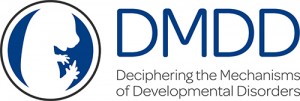New data reveals how gene knockouts affect whole embryo gene expression
Posted by DMDD, on 7 February 2017
 New DMDD data released on Expression Atlas reveals the effect of single gene knockouts on the expression of all other genes in the mouse genome. The gene expression profiles of 11 knockout lines have been derived from whole embryos harvested at E9.5, and the results can be compared with wild-type controls using an interactive online tool. Users can investigate which genes are differentially expressed as a result of a gene knockout, with the potential to uncover genes with similar roles or compensatory effects when a related gene is knocked out.
New DMDD data released on Expression Atlas reveals the effect of single gene knockouts on the expression of all other genes in the mouse genome. The gene expression profiles of 11 knockout lines have been derived from whole embryos harvested at E9.5, and the results can be compared with wild-type controls using an interactive online tool. Users can investigate which genes are differentially expressed as a result of a gene knockout, with the potential to uncover genes with similar roles or compensatory effects when a related gene is knocked out.
Data for additional lines will be released throughout 2017. The ultimate goal is to bring these molecular phenotypes together with the morphological phenotypes that have already been derived by the DMDD programme, to offer new insights about the effects of gene knockout on embryo development.
THE GENOMIC EFFECTS OF Ssr2 KNOCKOUT
The knockout of Ssr2 in the mouse was found to affect the expression level of 325 genes in total, and this is one of the 11 new datasets that can be explored in Expression Atlas.
The differential expression of each gene is described using the log2 fold change – a measure that describes the ratio of gene expression in the knockout to the level of gene expression in a wild-type control. A negative fold change (shown in blue in the image below) means that the gene was expressed at a lower level in the mutant. A positive fold change (shown in red in the image below) means that the gene was expressed at a higher level in the mutant.

The interactive tool in Expression Atlas allows different cut-offs to be applied to the fold change, so the genes displayed can be restricted to those with a large differential expression. The image above shows the 8 genes with a fold change greater than 0.4 as a result of knocking out the gene Ssr2.
The tool can also be used to visualise the data in graphical form. The plot below shows the fold change for each gene, allowing the user to quickly ascertain the extent to which a gene knockout caused differential expression of other genes. All 325 genes considered to have a significant change in the level of gene expression are plotted in red, with the rest shown in grey.

The full list of lines with data currently available is: 1700007K13Rik, 4933434E20Rik, Adamts3, Anks6, Camsap3, Cnot4, Cyp11a1, Mir96, Otud7b, Pdzk1 and Ssr2.
The full dataset for any line can be downloaded for further analysis, while the individual line pages on Expression Atlas integrate the DMDD data with other pre-existing data, in cases where a gene has already been shown to alter expression.


 (No Ratings Yet)
(No Ratings Yet)